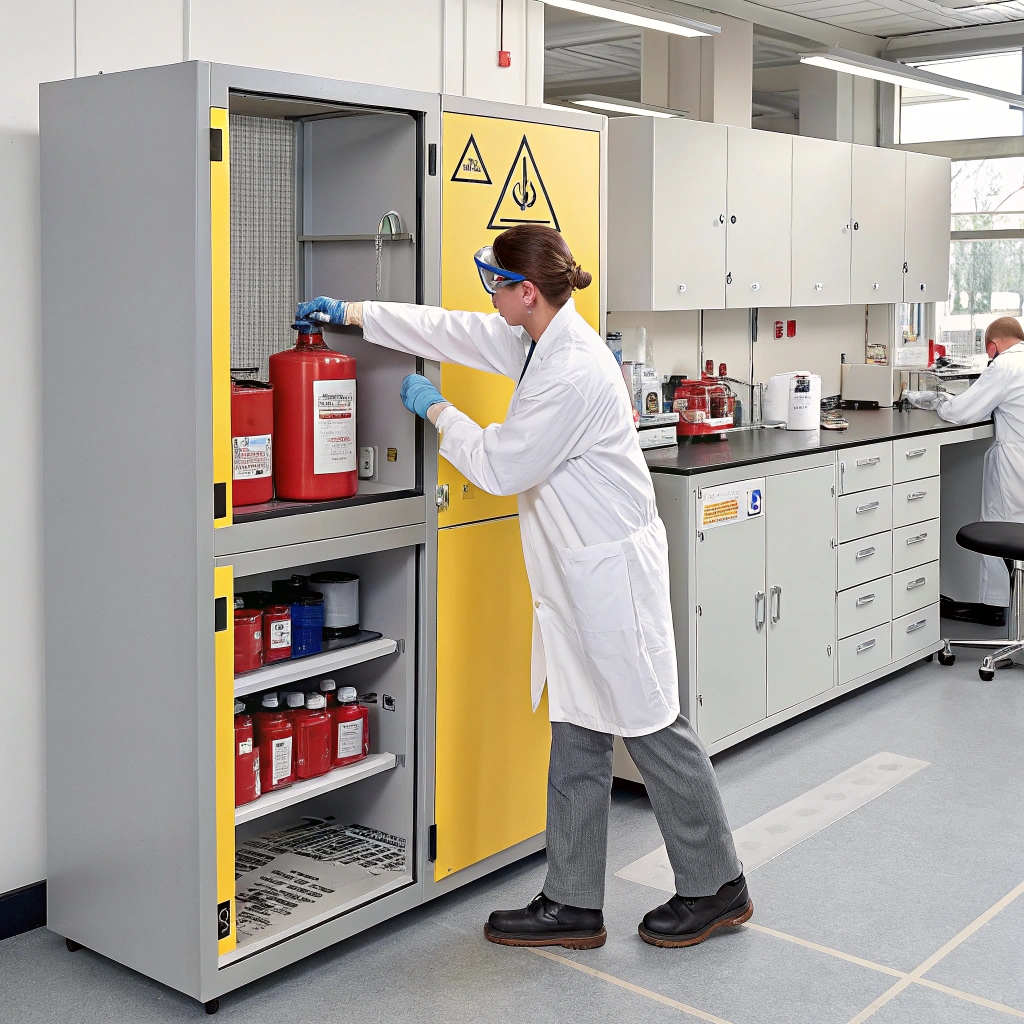Table of Contents
What Group of Chemicals Cannot Be Stored with Flammables? Essential Guidelines for Safe Chemical Storage
Introduction
Chemical safety is paramount in any workspace, especially when it comes to the storage of hazardous substances. While flammable chemicals are often handled with care, many people overlook the potential dangers of storing them alongside certain other chemicals. The reactions between incompatible substances can be explosive, toxic, or cause fires. So, what group of chemicals should never be stored with flammables? This article explores the chemicals that are incompatible with flammables, explains the associated risks, and provides the best practices for keeping your storage areas safe and compliant. Let’s dive in!
What Are Incompatible Chemicals?
Incompatible chemicals are substances that, when stored or mixed together, can react dangerously, leading to fires, explosions, or toxic gas emissions. These reactions can occur even without direct contact, as vapors or residues from one chemical can interact with others in the vicinity.
Examples of incompatible combinations include:
- Acids with bases – They can produce heat, often violently.
- Oxidizers with fuels – Oxidizing agents can make flammable materials ignite more easily.
- Flammable liquids with water-reactive chemicals – This combination can lead to explosive reactions or the release of dangerous gases.
These types of reactions can lead to dangerous incidents, which is why understanding which chemicals must be stored separately is crucial.
The Group of Chemicals That Cannot Be Stored with Flammables
There are several groups of chemicals that should never be stored alongside flammable substances. Storing these chemicals improperly can create hazardous environments. Let’s look at each group:
Oxidizing Agents
Oxidizing agents are chemicals that promote combustion by supplying oxygen or other reactive elements. When stored with flammable materials, these chemicals can easily trigger combustion, even without an external spark or flame.
Examples:
- Hydrogen peroxide
- Potassium permanganate
- Sodium nitrate
Why They’re Hazardous:
- Oxidizers enhance the flammability of other substances, making fires more likely.
- When mixed with flammables, they can cause rapid and intense fires.
Acids
Acids, particularly strong ones, can cause violent reactions when they come in contact with flammable materials. Some acids also emit dangerous fumes or heat during reactions.
Examples:
- Sulfuric acid
- Nitric acid
- Hydrochloric acid
Why They’re Hazardous:
- Acids can generate heat when reacting with flammable materials, which may ignite nearby substances.
- Acids like nitric acid can also produce toxic gases like nitrogen dioxide, which poses serious health risks.
Alkalis (Bases)
Alkaline chemicals or bases, such as sodium hydroxide, can react with flammables, especially under high temperatures. They may also cause intense corrosion, making spills even more hazardous.
Examples:
- Sodium hydroxide
- Potassium hydroxide
- Calcium hydroxide
Why They’re Hazardous:
- Bases can create heat and violent reactions when mixed with flammable substances.
- They can cause severe damage to containers, which can lead to leaks and spills, intensifying the risk of fire.
Water-Reactive Chemicals
Some chemicals react violently when they come into contact with water. This is especially problematic in areas where water is used to put out fires, as the reaction can escalate.
Examples:
- Sodium
- Calcium carbide
- Magnesium
Why They’re Hazardous:
- Water-reactive chemicals can produce highly flammable hydrogen gas when they come into contact with water.
- They may explode when exposed to moisture, even from humid air.
Halogenated Compounds
Halogenated compounds, such as chlorine or bromine, can enhance the combustibility of other substances. They are especially dangerous in environments with flammable materials because they may produce toxic byproducts when exposed to fire.
Examples:
- Chlorine
- Bromine
Why They’re Hazardous:
- They can form dangerous byproducts during combustion, such as toxic gases or corrosive acids.
- They increase the risk of fire and explosion when combined with flammable chemicals.
Why Storing These Chemicals Together Is Dangerous
Reaction Hazards: Storing incompatible chemicals together can lead to dangerous chemical reactions, resulting in explosions, toxic fumes, or fires. For example, storing oxidizers next to flammables can trigger a fire without any ignition source.
The Importance of Segregation: Chemicals should be segregated into categories such as:
- Flammable liquids
- Oxidizing agents
- Corrosive substances
- Toxic chemicals This separation minimizes the risk of dangerous reactions and ensures safer working conditions.
Regulatory Compliance: Both OSHA and NFPA have strict regulations regarding the safe storage of chemicals. Compliance with these standards not only protects workers but also ensures that your facility is legally compliant and minimizes liability.
Best Practices for Storing Flammable and Incompatible Chemicals
Use Separate Storage Areas
Flammable chemicals should be stored in designated flammable storage cabinets, away from oxidizers, acids, and bases. Ensure that incompatible substances are kept in separate rooms or designated lockers.
Proper Labeling and Signage
Every chemical storage area should be clearly marked with hazard symbols. Make sure each chemical is properly labeled according to its properties, and include information on any potential reactions.
Ventilation and Temperature Control
Store chemicals in well-ventilated areas, and ensure temperature control to avoid heat buildup, which can initiate dangerous reactions. Ventilation helps to disperse any vapors that could cause a fire hazard.
Secondary Containment
Use spill containment trays and cabinets to contain any accidental leaks. These provide an extra layer of protection against spills that could result in dangerous chemical reactions.
Regular Inspections
Frequently inspect chemical storage areas for leaks, damaged containers, or expired chemicals. Ensuring the integrity of your storage system is critical to maintaining safety.
Employee Training
All employees should undergo training on chemical storage safety, including understanding the dangers of incompatible chemicals and following safe handling procedures.
Regulations for Chemical Storage and Safety
OSHA Standards: OSHA (Occupational Safety and Health Administration) has comprehensive regulations on chemical storage, especially regarding hazardous materials and flammables. These standards ensure that chemicals are stored in compliance with safety protocols to prevent accidents.
NFPA Guidelines: The National Fire Protection Association (NFPA) provides detailed guidelines on storing hazardous materials safely. Their classification system for chemicals is essential for keeping your facility safe from chemical fires and explosions.
Local and Industry-Specific Regulations: Make sure to also follow local regulations, which may have specific guidelines for chemical storage, depending on your industry or geographical location.
Conclusion
Understanding the group of chemicals that cannot be stored with flammables is crucial for ensuring safety in chemical storage areas. By following proper segregation practices, adhering to regulations, and using best practices for chemical handling, you can prevent hazardous reactions, reduce risks, and maintain a safer work environment. Be proactive—take a look at your chemical storage systems and ensure they comply with safety standards today.
Ready to enhance your chemical storage practices? Ensure your facility is compliant and safe by following these guidelines!



